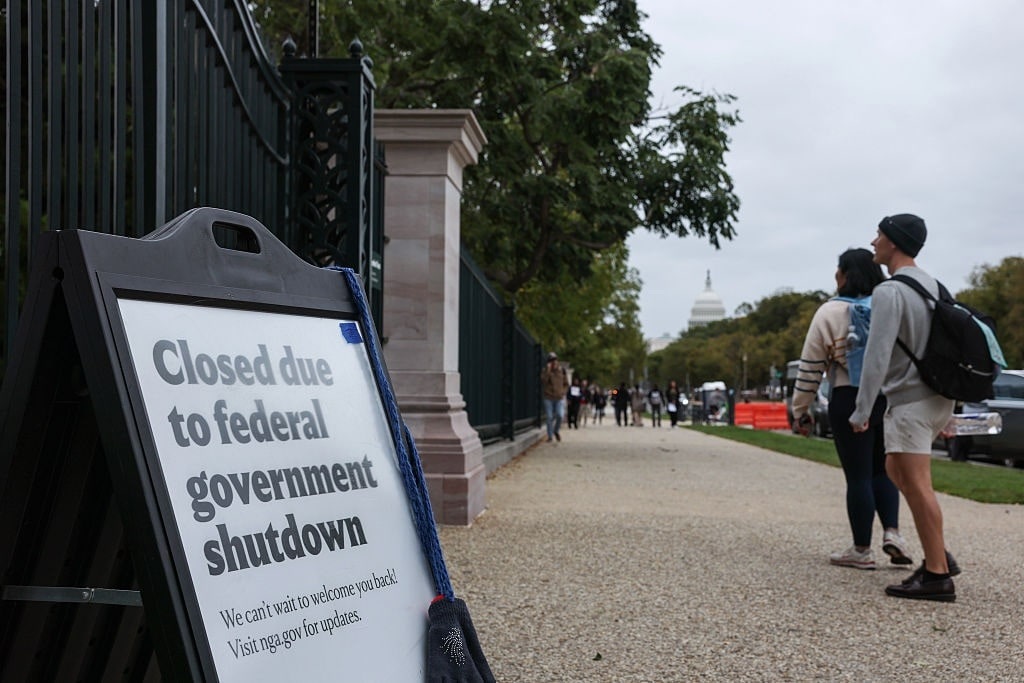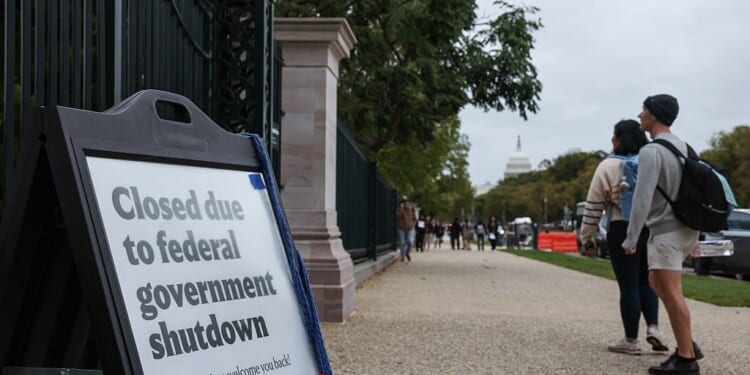
What’s the endgame – and will it play out the way President Trump’s opponents hope?
The federal government shutdown has hit a milestone of sorts. It is now the second-longest in US history and the longest full shutdown – which is when the fiscal year ends on Sept. 30 with none of the 12 appropriations bills signed. As things stand, there is no end in sight.
Having blocked 11 votes to reopen the government – 12 votes, as of Oct. 22 – Democrats are still insisting they want to “negotiate” but have shown no willingness to bend on the several conditions they placed on agreement to get DC operational again.
The main point of contention is still the Obamacare subsidies that, as originally defined by Democrats, are set to expire at the end of 2025. Now, those same Democrats are demanding that the subsidies be extended. Senate Majority Leader John Thune (R-SD) signaled he would bring a vote to the floor on the subsidies once the government shutdown has ended.
That’s not good enough, it seems. Democrats want a guarantee that the subsidies for the clearly misnamed Affordable Care Act will be extended before they vote to reopen the government.
There are almost certainly enough Republicans who would be just fine with extending those subsidies – allowing the Democrats to overcome their minority positions in both chambers of Congress. So, getting the government open and then voting on the matter seems reasonable.
Government Shutdown Behind the Scenes
Was the shutdown about looking out for the American people, or was this an attempt to sabotage the Trump administration? Or maybe this was a desperate and historically unpopular Democratic Party hoping to score some points with its dwindling base and perhaps draw some deserters back into the fold.
A telling indication came during a Fox News interview of Democrat Rep. Katherine Clark (D-MA), the party whip. Clark told Fox’s Chad Pergram, “Shutdowns are terrible and of course there will be, you know, families that are going to suffer. We take that responsibility very seriously. But it is one of the few leverage times we have.”
It follows, then, that Democrats feel their advantage over the GOP grows if the suffering is prolonged. Thus, the cynic can only surmise that the minority party is going for maximum pain to extract the maximum concessions. If you lack the votes to drive your agenda, force a government shutdown and impose the agenda through demands, so to speak.
Trump Keeps Busy as Votes Fail
Are cracks showing? Perhaps, but they are, as yet, not wide enough to collapse resistance to the continuing resolution (CR) passed by the House that Senate Democrats continue to block. On Oct. 22, Senate Republicans once again fell short of the 60 votes needed to pass the temporary funding measure and end the government shutdown.
Following a filibuster by Sen. Jeff Merkley (D-OR), which he dragged out for almost 23 hours, the vote failed, 56-41. Sen. Rand Paul (R-KY) is the lone GOP vote blocking the CR, while Democrat Sens. John Fetterman of Pennsylvania and Catherine Cortez Masto of Nevada voted in favor of the bill. They were joined by Maine independent Sen. Angus King, who caucuses with the Democrats.
While the drama continues, President Donald Trump has been busy downsizing and restructuring the federal government and slashing programs. One might say he is making hay while the government shutdown sun shines. Beltway insiders might know who is going to blink first, but, beyond the US capital, it’s anyone’s guess. Whenever and however it ends, the Democrats will have taken their one shot before the 2026 midterms, because, in all likelihood, neither party will want to risk being blamed for a shutdown two months before next year’s midterm elections.
Liberty Nation does not endorse candidates, campaigns, or legislation, and this presentation is no endorsement.

















